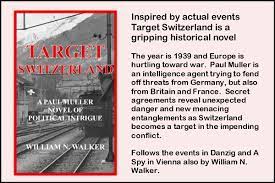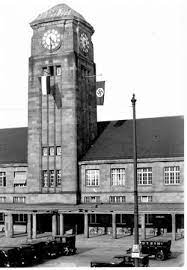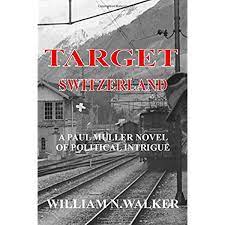Goodreads meta-data is 447 (very long) pages, rated 4.47 by 136 litizens.
Genre: Thriller.
Verdict: Ugh.
There is a world of difference between a thriller and a krimi, and this is a thriller, well, a wannabe thriller. What it is largely is an exposition of the facts and figures about Switzerland in 1939. A crashing bore, you might think, and you’d be right. It is opened by a chapter about a German tank unit during the invasion of France in 1940, and I am now at 54% in Switzerland in early 1939 with no connection to that first chapter. No, I am not on the edge of my seat, rather slumped in the chair in frustration and boredom. (P.S. I flipped to the end and found a squib of an explanation of the tank unit opening. Too little, too later for this impatient reader.)

One major theme is the extensive arms production in Switzerland. They were busy selling to all sides. That is played up so much I began to think that the way to avoid war was to put the Swiss out of business as the merchants of death.
As I was skimming through the pages of stilted, meandering prose I wondered why I had elected to read it. What prompted me to take up this stew. I flicked the pages on the Kindle faster and faster and then…
Our hero secret agent Müller is impressed by the banker he meets, the more so since she is a woman, because she knows a lot about Switzerland that he, native though he is, does not know. One of the unknowns for him is where Basel is. Yep. It seems to be news to him that it is on the German border with that most peculiar train station. (Psst. There must have been a reference to this station in the blurb and that is why I selected it.)
One of the three Basel train stations is very peculiar. The Basel Badischer Bahnhof was known from 1933 to 1945 as the Basel Deutsche Reichsbahn. See the difference? No, well, check those dates and think again. Historically a rail company from Baden built the track and the station in the 19th Century and arranged by treaty – when Baden was an independent duchy before German unification – with Switzerland (in effect with canton of Basel) to operate the station which is on Swiss territory. This arrangement rolled over when Germany absorbed Baden. The track and the platform are by treaty German, but the station building is Swiss. De facto the border runs through the station between the platforms and the station hall. This was a legal fiction until 1933 with advent of Nazism made it a grim reality.

Think of a train station as three components to get the picture: the tracks, the platforms, and the hall. In this station the tracks and trains on them along with the platforms to enter and leave the trains were in Germany, while the hall that travellers passed through was in Switzerland. That division, by the way, is easily to visualise in Sydney Central Station for intercity travel with the ticket barrier and its scanners as the border.
On the other side of the hall there are platforms and rails serving Switzerland (like the suburban platforms at Sydney Central). I know that I saw this station when in Switzerland (1983) because I remember asking someone about the Badischer in the name and getting fobbed by an interlocutor who either didn’t know or didn’t care or both.
Today this kind of arrangement can be found elsewhere. In both Vancouver and Toronto airports (and perhaps elsewhere, too) USA customs and immigration is accommodated in the Canadian airports on Canadian territory. To leave Toronto one passes through Canadian officials and then US ones to get to an aircraft going to the USA. In that zone the US authorities are sovereign by treaty like an embassy.
Back to Basel, from 1933 this division of the station made it a tempting conduit for some fleeing Nazi Germany, and knowing that fact, Nazi agents manned the checkpoint from the platform to the station with vigilance and plainclothes Gestapo agents roamed the hall in Swiss territory intimidating and on occasion kidnapping travellers. That latter was illegal but the neutral Swiss seldom complained, preferring to go along to get along with the bigger and meaner neighbour as long as the victims were not Swiss.

I can find almost nothing about this anomalous station. I went looking for history on the Swiss Federal Railways web site to no avail. That is, Schweizerische Bundesbahnen, Chemins de der fédéraux suisses, Ferrovie federali svizzere, and Viafiers federalas svizras, whew! No wonder it has more than 30,000 employees! Visiting archives, I once travelled on SFR from Zurich to Geneva to Neuchâtel, and back.
Is this station another missed opportunity for Hollywood to muddle history ‘based on a true story?’ Dibs! I can imagine the clichés punctuated with childish CGI for by the prepubescent boy directors and audience.
All of this is more interesting than the tome at hand. Read it and decide for yourself.

